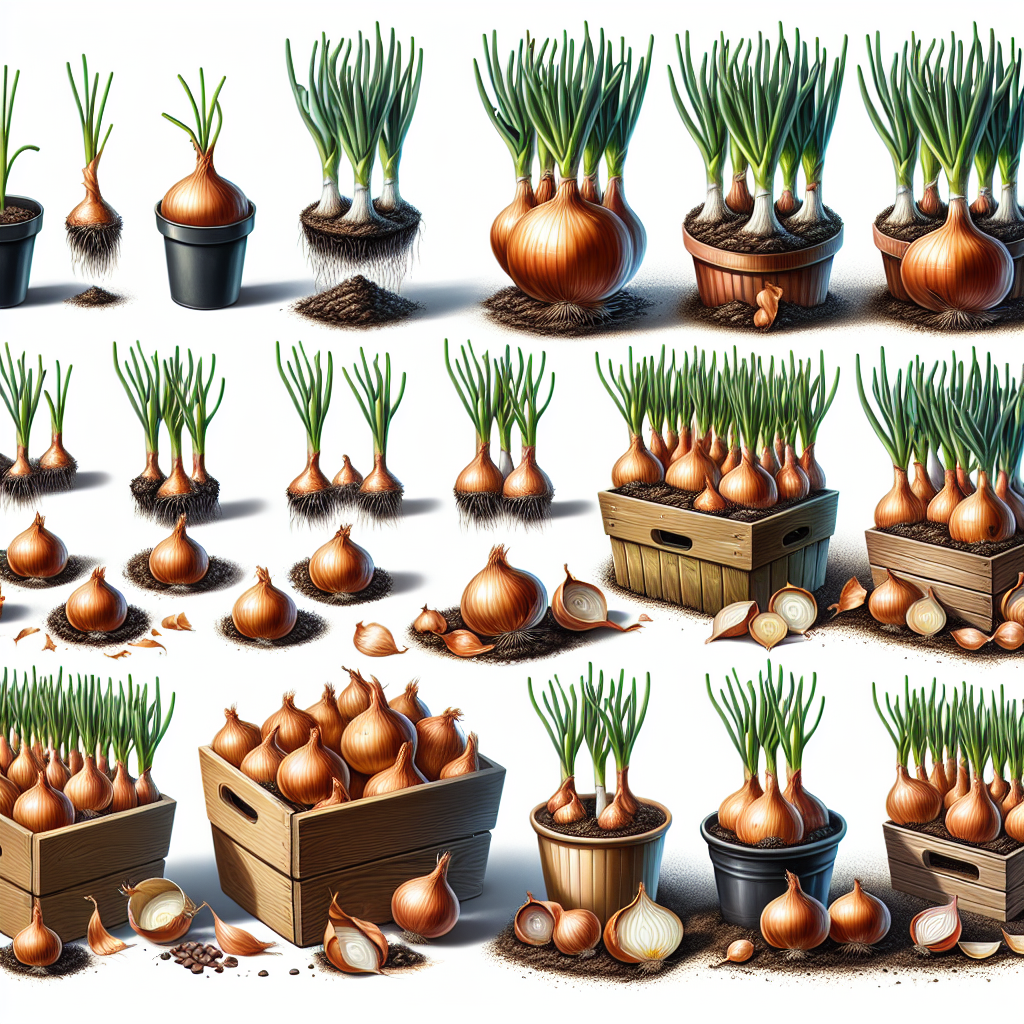Growing onions in containers can be a rewarding and successful endeavor for gardeners of all skill levels. Whether you have limited space, poor soil conditions, or simply want the convenience of fresh onions at your fingertips, container gardening offers a viable solution. In this comprehensive guide, we will explore everything you need to know to grow onions successfully in containers.
Choosing the Right Container:
When it comes to growing onions in containers, selecting the right container is crucial for your plants’ health and productivity. Onions have shallow root systems, so a container that is at least 6-8 inches deep and has a diameter of 10-12 inches is recommended. Ensure that the container has adequate drainage holes to prevent waterlogging.
Selecting the Right Onion Varieties:
Onions come in different varieties, and choosing the right one for container gardening is essential. Look for varieties specifically mentioned as suitable for container gardening or those with a compact growth habit. Examples include ‘Purplette,’ ‘Evergreen Hardy White,’ and ‘Red Baron.’ These varieties are known to thrive in containers.
Preparing the Container:
Before planting your onions, prepare the container by filling it with well-draining potting soil or a mix of garden soil and compost. This will provide the necessary nutrients for healthy growth. Avoid compacting the soil too much as onions prefer loose soil for proper root development.
Planting Onion Sets or Transplants:
Onions can be grown from sets (small dormant bulbs) or transplants (already germinated seedlings). Both options work well in containers, but sets are often preferred due to their ease of planting. Gently press each set into the soil about an inch deep, spacing them 2-3 inches apart. If using transplants, make small holes in the soil using your finger and place each transplant into a hole.
Proper Watering:
Water is crucial for onion growth but avoid overwatering as it can lead to root rot. Onions require regular, consistent watering. Keep the soil moist but not waterlogged. A good rule of thumb is to water when the top inch of soil feels dry. During hot summer months, you may need to water more frequently to prevent wilting.
Fertilization:
To ensure healthy growth and ample onion bulb development, fertilize your container-grown onions regularly. Apply a balanced liquid fertilizer every 2-3 weeks or use slow-release granular fertilizer according to the packaging instructions. Make sure not to over-fertilize as it can lead to excessive foliage growth instead of bulb development.
Managing Pests and Diseases:
Onions are generally resistant to pests and diseases, but it’s important to watch out for common issues like onion flies, thrips, and fungal diseases such as pink root or downy mildew. Regularly inspect your plants for signs of infestation or disease and take immediate action if necessary. Organic pest control methods like neem oil or insecticidal soap can be effective against common onion pests.
Harvesting and Storage:
Onions are ready for harvest when the tops yellow and start falling over naturally. Carefully lift them from the soil using a garden fork or trowel, being careful not to damage the bulbs in the process. Once harvested, allow your onions to cure in a well-ventilated area for a couple of weeks until the outer skin becomes papery. Store cured onions in a cool, dry place with good air circulation.
Conclusion:
Growing onions in containers can be an enjoyable experience that yields tasty rewards. With proper container selection, diligent care, and attention to their unique needs, you can successfully grow onions even with limited space or challenging soil conditions. Experiment with different varieties, try growing both green onions and bulb onions, and enjoy the satisfaction of harvesting fresh home-grown onions at your convenience throughout the year.













